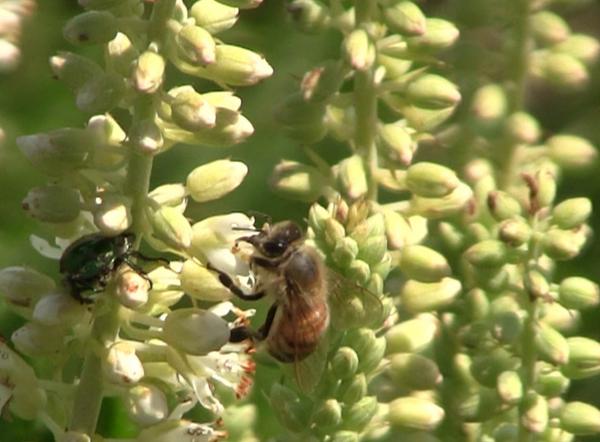If conditions in Kentucky are any barometer of what might be expected in other parts of the country, summer is going to end with a bumper crop of white grubs.
 Adult beetles are swarming across the bluegrass state in numbers that University of Kentucky entomologist Dan Potter, Ph.D., says he hasn't seen in at least five years. Japanese beetles populations, which the U.S. Department of Agriculture says is the largest single pest in turf and agriculture, are especially high, but masked chafers and green June beetles also are present in larger-than-usual numbers, said Potter.
Adult beetles are swarming across the bluegrass state in numbers that University of Kentucky entomologist Dan Potter, Ph.D., says he hasn't seen in at least five years. Japanese beetles populations, which the U.S. Department of Agriculture says is the largest single pest in turf and agriculture, are especially high, but masked chafers and green June beetles also are present in larger-than-usual numbers, said Potter.Most of the eggs, Potter said, will hatch in the next two-three weeks. There is a lot that golf course superintendents can do in the interim to keep root-eating white grub populations in check.
Preventive applications of chlorantraniliprole, imidacloprid, clothianidin, thiamethoxam or combo products with those active ingredients are all very effective at controlling early season grubs when applied from about the first week in May until the end of June, Potter said.
"Mid-July is later than optimum for preventive treatments," Potter said. "But I'd still expect to get decent control up to the end of July."
It is critical to target grubs as early as possible - the first instar stage if possible.
"Once the eggs have hatched and grubs are starting to get larger the options are more limited," Potter said. "Our most effective products for curative or rescue treatments are still Dylox and Arena. Carbaryl can also be used, but it is toxic to earthworms, requires higher rates, and seems a bit less effective than the other two. Curative or rescue applications often give no more than 75 percent control."
According to the USDA, nearly $500 million is spent annually to manage Japanese beetles and white grubs, almost half of which is spent in the turf industry.
So, why so many grubs this year?
That's a good question, says Potter, but significant beetle numbers likely is a sign of a warm, wet spring and summer.
"It is difficult to predict 'bad' or 'good' grub years, but we do know that soil moisture is one of the main keys," Potter said. "The eggs require about 10-11 percent soil moisture to hatch. The beetles seek moist soil with lush grass in which to lay their eggs. We've had a lot of rain in spring/summer 2016, good conditions for egg and larval survival. So we expect high grub populations going into August. If it keeps raining, turf may be vigorous enough to mask much of the grub injury, but we expect to see a lot of damage to low-mowed or moisture stressed turf in August and September."

